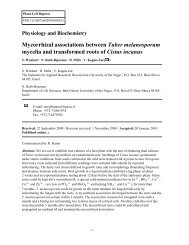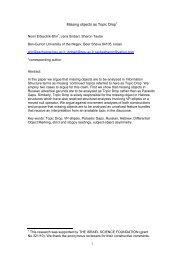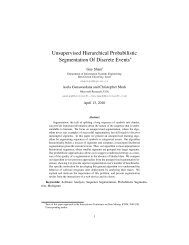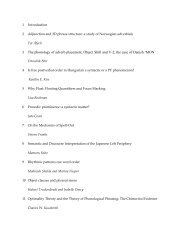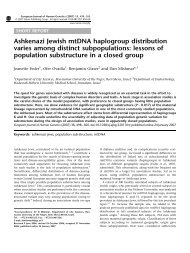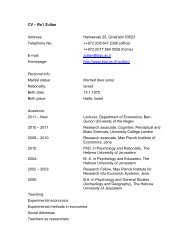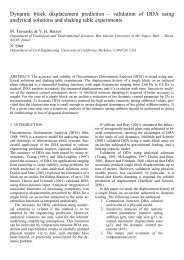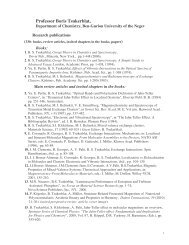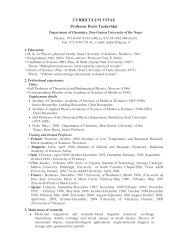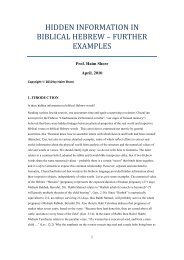Generics, Frequency Adverbs, and Probability
Generics, Frequency Adverbs, and Probability
Generics, Frequency Adverbs, and Probability
Create successful ePaper yourself
Turn your PDF publications into a flip-book with our unique Google optimized e-Paper software.
3 Homogeneity<br />
In order to answer this question, we ought to consider more carefully the<br />
evaluation of probability judgments. Since it is impossible to observe arbitrarily<br />
long histories in the actual world, these must be extrapolated from the<br />
actual history that transpired <strong>and</strong> was observed. For this extrapolation to<br />
be of use, we need to assume that the observed instances provide a good statistical<br />
sample. That is to say, we need to assume that the relative frequency<br />
over the sample we do have is close to the value of the probability, i.e. the<br />
relative frequency over arbitrarily long sequences. In order for us to believe<br />
this, any history we consider ought to be such that any sufficiently large<br />
sample taken from it is a good sample. Then, if our sample is sufficiently<br />
large, we can extrapolate from it with some confidence.<br />
This idea has already been explored by von Mises, who requires an admissible<br />
sequence to be r<strong>and</strong>om, in the sense that every sub-sequence selected<br />
from it <strong>and</strong> satisfying some constraints 9 must have the same relative frequency<br />
as that of the original sequence.<br />
A r<strong>and</strong>om sequence, then, is one in which the relative frequency of a<br />
certain outcome over all sufficiently large sub-sequences approximates the<br />
probability for that outcome. A r<strong>and</strong>om sequence does not admit of long<br />
“chunks” where the relative frequency of φs among ψs differs from the relative<br />
frequency in the sequence as a whole. In the words of Fisher (1959), it must<br />
9 Von Mises <strong>and</strong> subsequent researchers have made a number of proposals regarding the<br />
appropriate constraints; see Salmon (1977) for an overview.<br />
24




